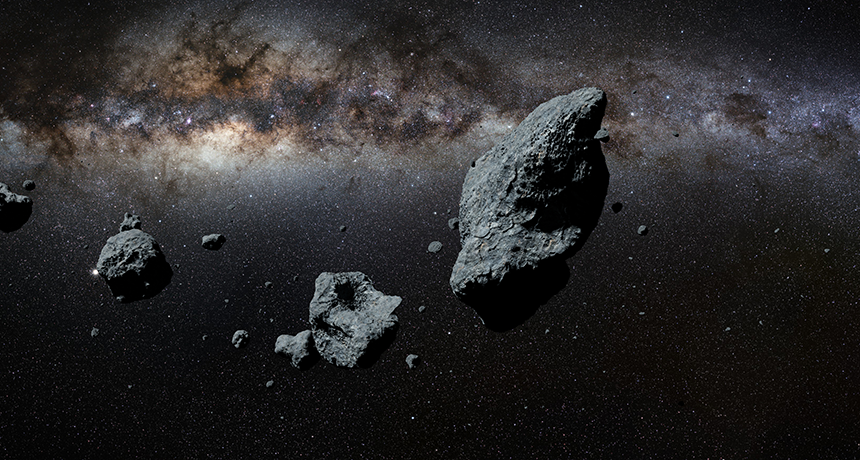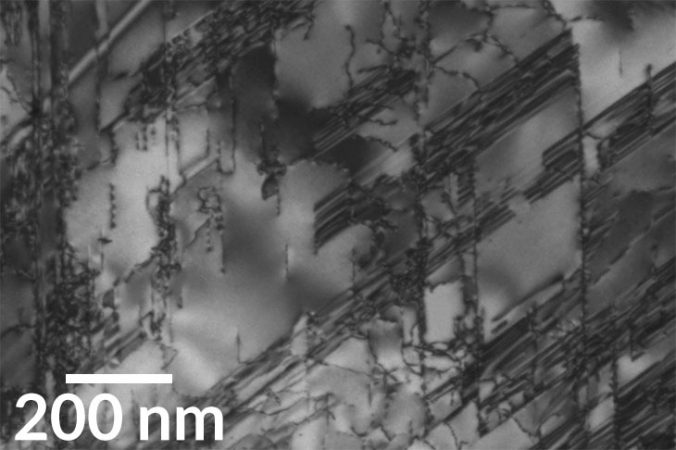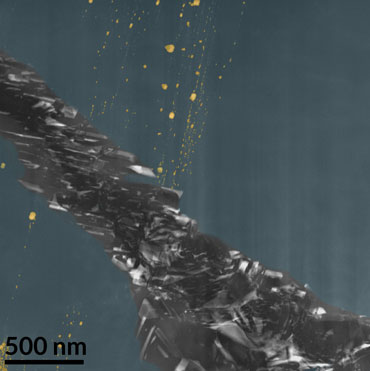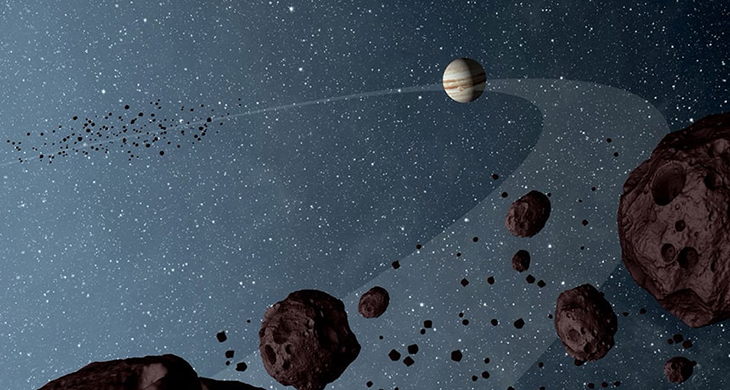Diamonds and more suggest unusual origins for asteroids
One seems to come from a lost planet, the other from outside our solar system

Inside a space rock, scientists found unusual diamonds. They hint that rock formed inside a long-lost planet.
dottedhippo/istockphoto
By Emily Conover and Lisa Grossman
A space rock that fell to Earth a decade ago may once have been part of a planet. It would have been a planet that met its end in the solar system’s early days, new data indicate. Inside this meteorite, scientists found tiny pockets of iron and sulfur. They were wrapped in diamonds. Those crystal gems formed under high pressure, the researchers say — likely inside a planet the size of Mercury or Mars.
There’s also a second newfound space oddity. Scientists have been studying a renegade asteroid that travels in a strange direction. They now report that this space rock appears to have been born somewhere outside our solar system.
The new observations come from a pair of new papers.
Let’s start with the gem-studded meteorite. It’s parent no longer exists. It likely would have been a protoplanet — a moon- to Mars-sized celestial “embryo” that could have helped build a true planet through a series of energetic collisions. But in that process, the meteorite’s parent appears to have been smashed to smithereens. It would have been long ago — in those violent early days of our solar system’s formation.
“We probably have in our hands a piece of one of these first planets that have disappeared,” says Philippe Gillet. He’s a geophysicist in Switzerland who works at a research institute and university. It’s known as EPFL. That’s short for École Polytechnique Fédérale in Lausanne.
Along with his colleagues, including EPFL physicist Farhang Nabiei, Gillet analyzed tiny rock fragments. The pieces came from the Almahata Sitta meteorites. These meteorites are famous because they are parts of the first asteroid that scientists tracked all the way from space to their crash-landing on Earth. This asteroid streaked across the Nubian desert in Sudan in 2008.
Almahata Sitta meteorites are a type called ureilites (Yu-ree-AY-leits). Their makeup differs from any of the known stony planets in our solar system. Inside these ureilites are very small diamonds.
Story continues below image.

Diamonds are crystals made of pure carbon. They can form from a powerful collision. Or they can form in a dense environment where pressures are very high, such as inside a space rock. The width of diamonds inside the meteorites was only about 100 micrometers (about four thousandths of an inch). But that still made them too large to have been formed by two ordinary asteroids colliding. Such diamonds could form, however, inside very large asteroids. If the asteroid was at least 1,000 kilometers (600 miles) wide, the pressure inside it could be high enough to squeeze carbon into diamonds.
Also odd
The researchers discovered another strange thing. It made them question whether the gems came from an asteroid at all. The diamonds had grown around even smaller crystals of iron and sulfur. Normally iron and sulfur would repel each other like oil and water, says Cécile Hébert. She’s another physicist at EPFL.

It must have taken enormous pressure to make those crystals hold together. You’d need pressure almost 200,000 times higher than what we feel at sea level on Earth. Where could such an environment exist? “That can only be at the center of a very large planet,” Hébert says. The planet would have to have been somewhere between the sizes of Mercury and Mars. That would make its diameter about 4,900 to 6,800 kilometers (3,000 to 4,200 miles), Hébert says.
As they were forming, these would have been what are called protoplanets. They likely existed some 4 billion years ago, during the early days of the solar system. But only a few survived to become the today’s four true rocky planets: Mercury, Venus, Earth and Mars. The rest probably smashed into each other, breaking apart within the first 100 million years. Scientists have seen this in simulations of the early solar system.
“We are confirming the existence of such former planets,” Gillet says. He and his team shared their new findings April 17 in Nature Communications.
It isn’t surprising that these planets may have existed, says Meenakshi Wadhwa. She’s a space chemist at Arizona State University in Tempe. But, she notes, this is the first time a meteorite has held direct evidence for a vanished protoplanet.
Not so fast, says Martin Bizzarro. He’s a space chemist at the Natural History Museum of Denmark in Copenhagen. A protoplanet is not the only explanation possible.
“They’ve done very careful work,” Bizzarro says. But more research needs to be done. For example, scientists might test for magnetic fields left over from the rock’s time inside its planet. That could reveal if the meteorites were once within a large planet’s hot, liquid core. Whether the meteorites really came from a protoplanet is “still an open question,” he concludes.
Story continues below image.

An immigrant asteroid?
Now for that renegade rock. Known as 2015 BZ509, it shares its orbit with Jupiter. Asteroids in the infant solar system formed from one swirling cloud. They should therefore travel in the same direction — even now. To find out why one of them doesn’t, astronomers turned to a computer model. Such computer programs run a lot of complex simulations. These can test many ideas and then home in on the most likely explanation or prediction of some event.
That modeling showed that the odd asteroid could have been traveling in reverse ever since the solar system’s youth. The best explanation for why: that this rock migrated from another star’s planetary system. If true, it would be the first asteroid known to do so.
Fathi Namouni of the Côte d’Azur Observatory in Nice, France, and Helena Morais of Universidade Estadual Paulista in Rio Claro, Brazil shared their analysis May 21. It appears in the Monthly Notices of the Royal Astronomical Society Letters.







